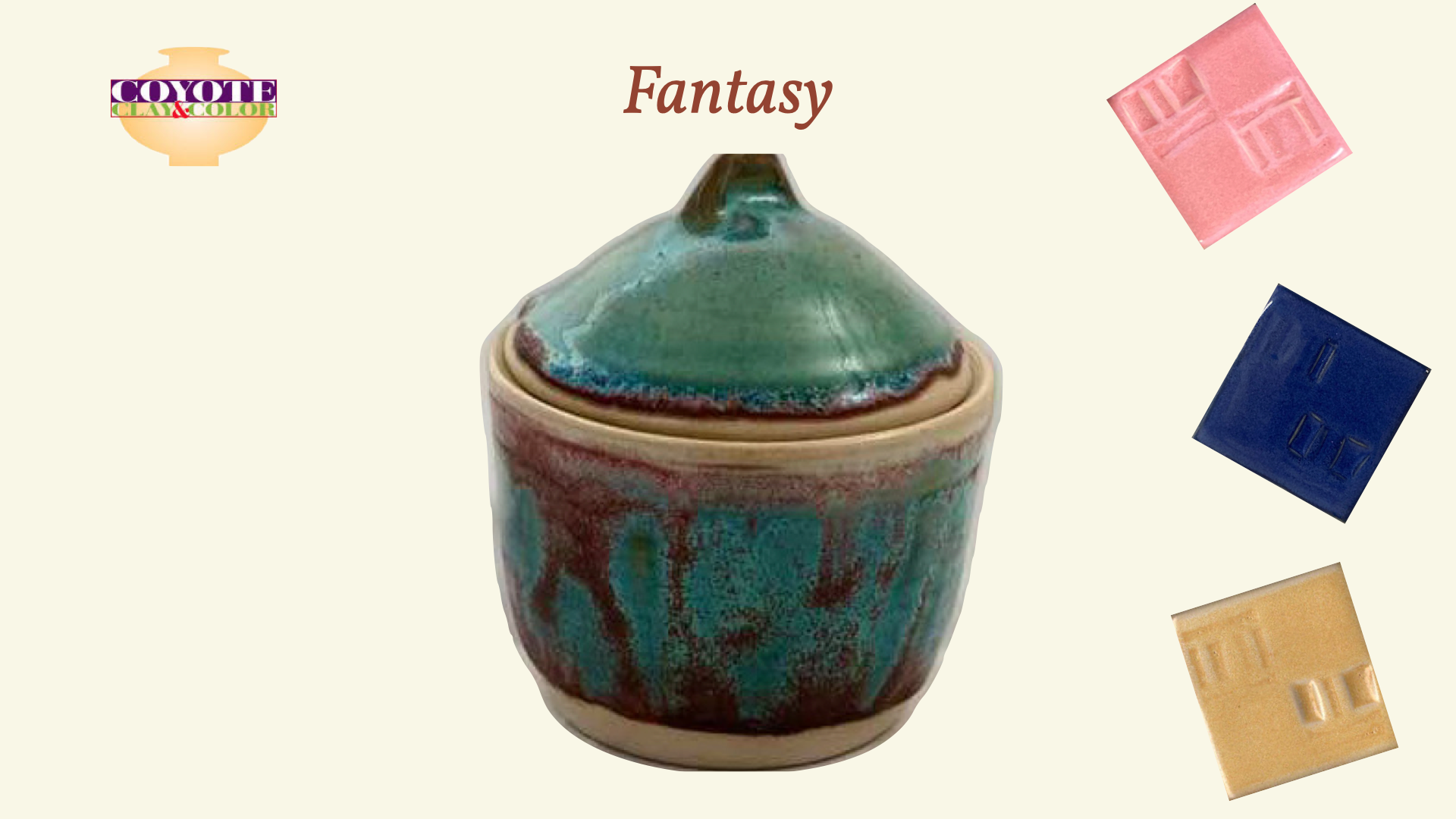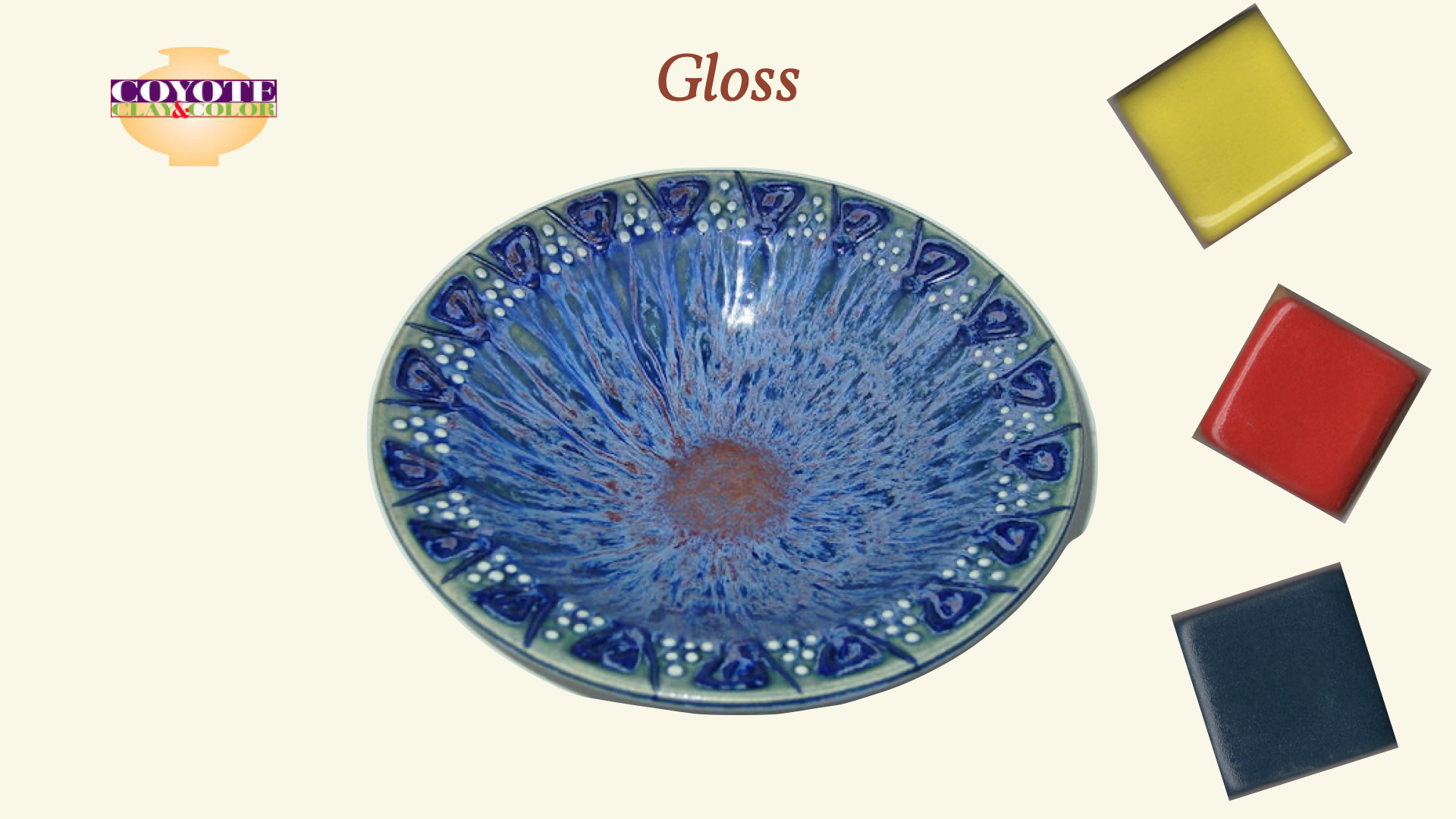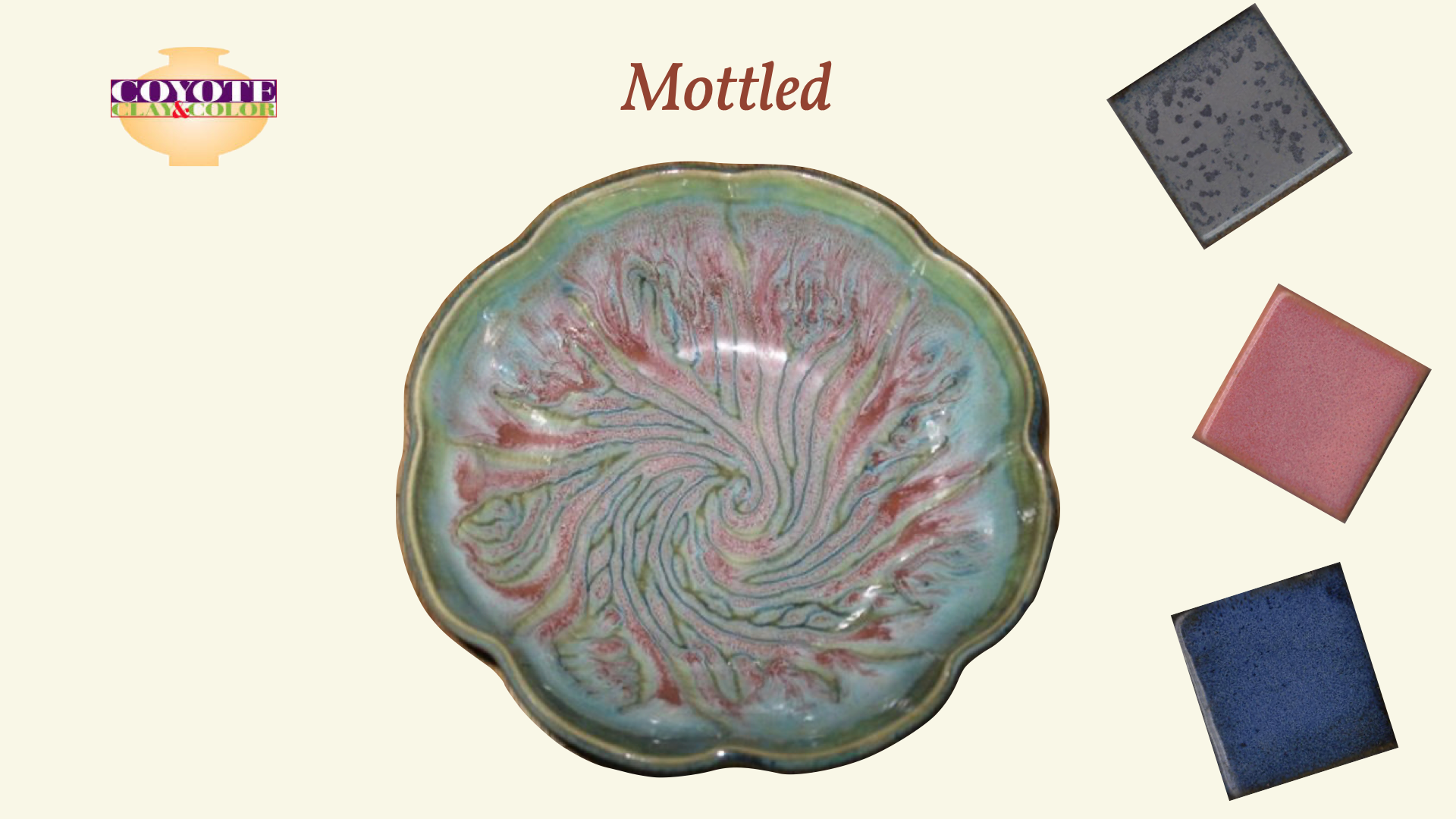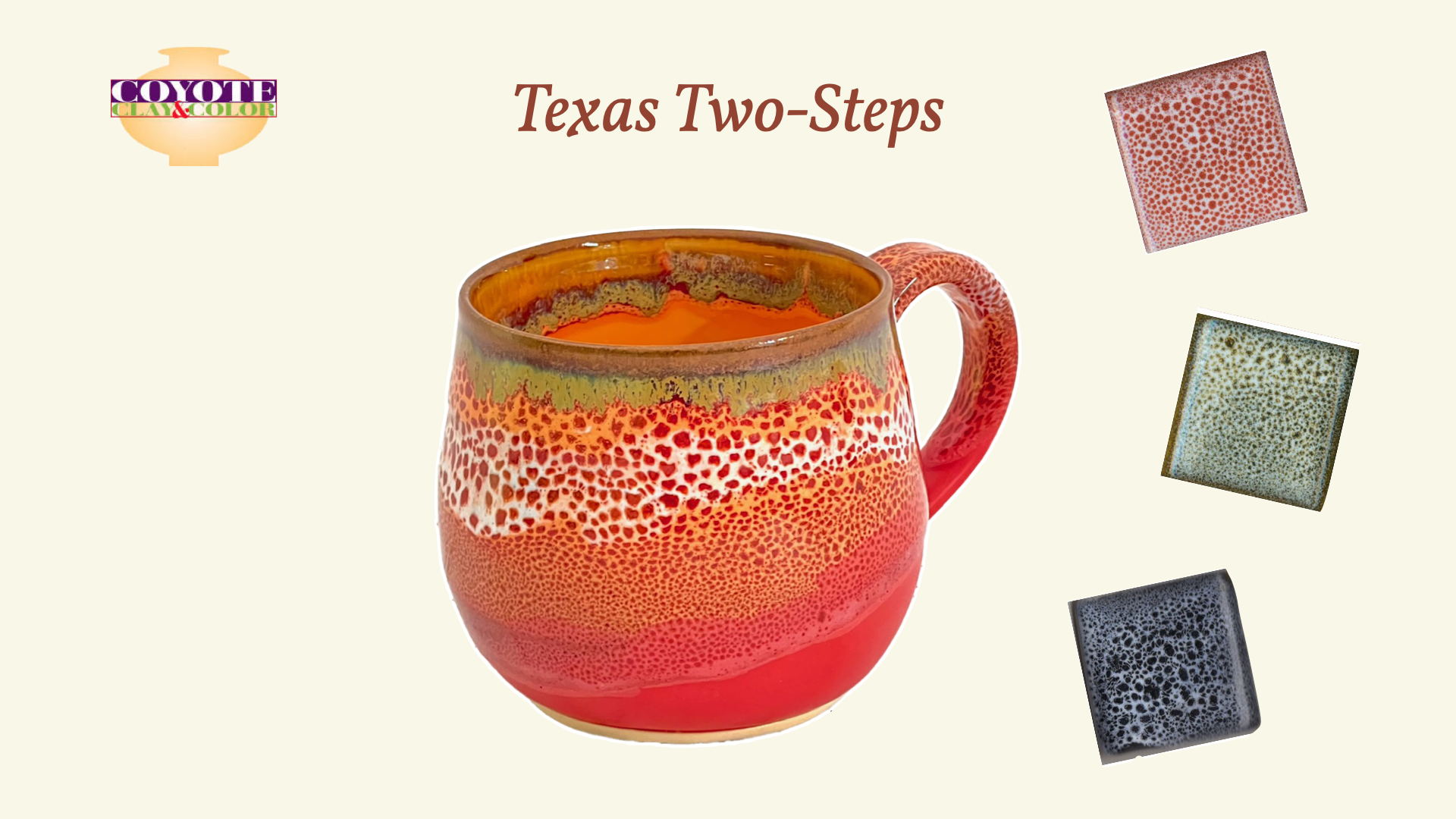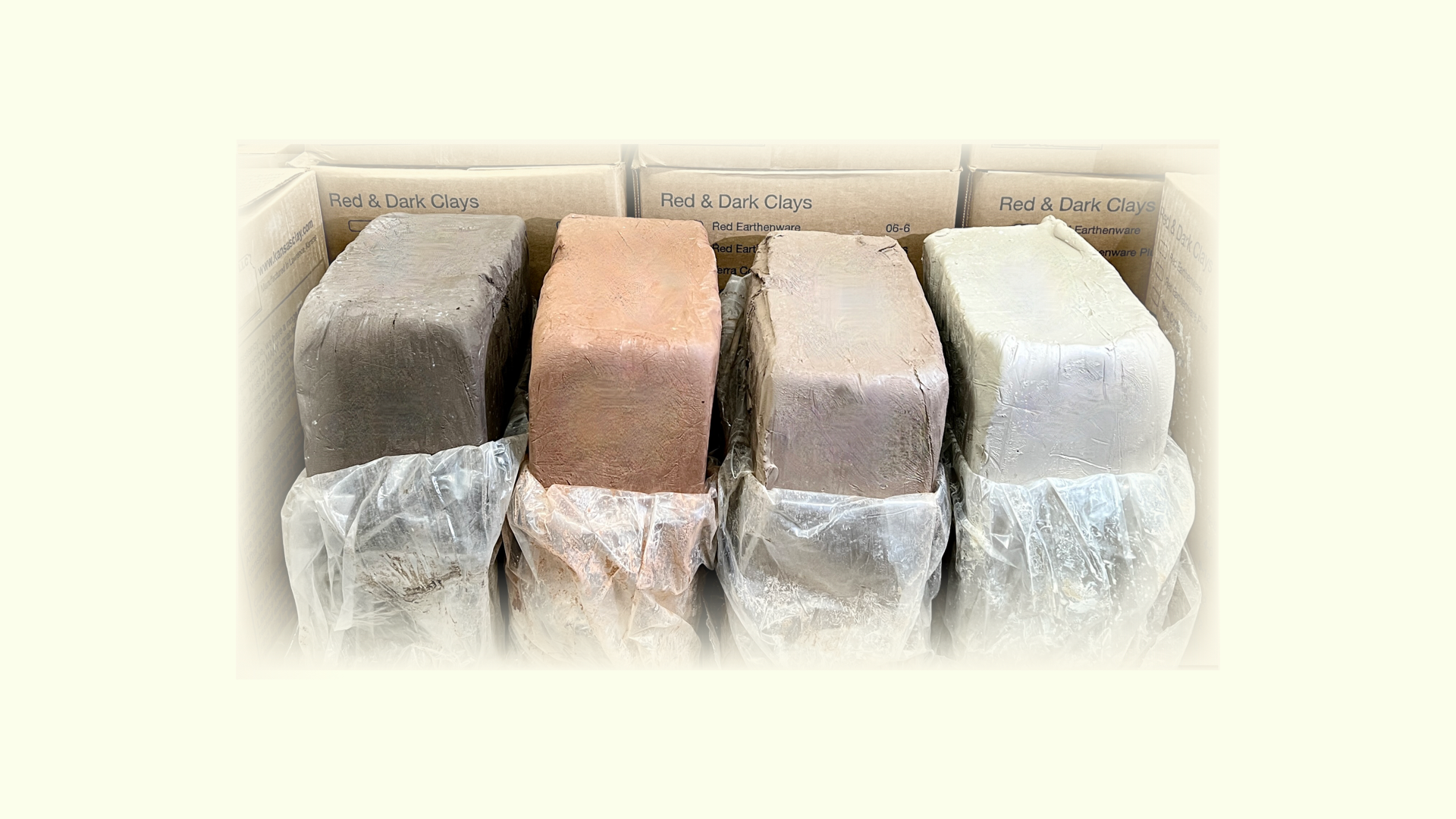Mediterranean Sea Coyote Vibro Color #200
Choose your option
Passion Red Coyote Vibro Color #201
Choose your option
Periwinkle Coyote Vibro Color #202
Choose your option
Sundrop Coyote Vibro Color #203
Choose your option
Tiger Lily Coyote Vibro Color #204
Choose your option
Turquoise Lake Coyote Vibro Color #205
Choose your option
Resources
Vibro & Enduro Colors
Vibro & Enduro Colors

Enduro-Color Glazes are designed for durability. They are perfect for liner glazes, standing up against fork and knife marking, dishwashers, and tomato stains. Enduro-Colors resist acid, chipping, crazing, scratching, staining, and all other hard use factors.
Vibro-Colors are as stable and reliable as Enduro-Color Liner Glazes, but loaded up with colorant for a vibrant pop. They do not run, resist scratching and crazing, and look pretty much the same in all firing cycles.
Coyote Glaze Application instructions
Coyote Glaze Application instructions
Basic Glazing Instructions
First you want to apply wax resist to the foot of your pot (where you don't want any glaze). When you dip your pot in bucket of glaze, the glaze won't stick where you have waxed. The glazes become molten glass in the kiln, so if there is any glaze on the bottom, your pot will stick to the shelf. This will wreck your pot and your kiln shelves! Paint a thin coat of wax on the bottom, as well as up the sides at least ¼ inch. All glazes move a little in the firing, and some are quite runny. Always leave enough room for your glaze to flow some without sticking to the kiln shelf. Until you are familiar with a particular glaze, it is better to leave some extra room.
- Use a thin coat of wax. It works better and dries faster.
- Let the wax dry for at least 15 or 20 minutes before dipping a pot in glaze.
- Use an old cruddy brush, they are never the same after using for wax.
- Clean your wax brush in warm water with a drop or two of dishwashing soap.
- Be careful not to get the wax where you don't want it, i.e. waxy fingerprints.
- Before you glaze your work, you should quickly rinse it under cold water.
- Thoroughly mix the glaze just before you use it.
Dipping
To coat the whole piece in a single glaze, the easiest technique is to pick it up with a pair of glaze tongs, dip it in, count to three and pull it out. Make sure to empty it as you withdraw it. If you pull a bowl out still full of glaze it will weigh so much that the tongs will break through. Hold it upside down over the bucket to drain the excess glaze. There will probably be some glaze sticking to the waxed areas; wipe off what you can while you are holding it with the tongs. Set the piece down and let it dry. After it is dry enough to handle, turn it over and sponge off any glaze still remaining on the bottom. The foot must be perfectly clean before it can go in a kiln.
Brushing
For brushing, most glazes need 2 to 3 coats. It is easier to get even coverage if you brush the first coat side to side, then the next coat up and down.
Firing
These glazes work best when fired between cone 5 and 6 (Orton Standard or Self-Supporting Cones, used as a witness cone placed on the kiln shelf during firing). If you use a kiln sitter you usually have to use a cone six in the sitter to achieve a good cone 5. For automatic kilns, we fire to cone 5 (fast) with a 15 minute hold. Every kiln is different, so you may have to fine tune your firing to achieve the best results.
Coyote Glaze Safety Info & SDS
Coyote Glaze Safety Info & SDS
|
Coyote Glazes are evaluated by an independent toxicologist. None of their recipes use lead and all are non-toxic in the liquid state. Continue reading below for more information. |
| Liquid Glaze |
| Click Here for Liquid Glaze SDS |
| All Coyote liquid glazes are non-toxic under proposed use conditions (brushing, pouring, and dipping). All Coyote glazes are lead free, most are cadmium free; however none of these glazes should be taken internally as they contain ingredients not suitable for ingestion or inhalation. All Coyote glazes contain quartz (silica), and some contain cobalt, chromium and cadmium. We do not recommend that the glazes be used for spraying, as that would increase the risk of inhalation. Product labeling; All Coyote glazes have been evaluated by an independent toxicologist and are properly labeled in accordance with ASTM D-4236. In liquid form none require any warning statement other than "conforms to ASTM D-4236." However, we voluntarily adhere to stricter labeling guidelines which include the following statements: -WARNING: This glaze contains quartz, and might contain titanium dioxide, chromium, cobalt, or cadmium. Possible cancer agent based on tests with laboratory animals, exposure may cause lung damage. -Keep out of reach of children, avoid inhalation. Call your local poison control center for more health information. -This product contains chemicals known to the State of California to cause cancer or birth defects or other reproductive harm. |
| Dry Glaze |
| Click Here for Dry Glaze SDS |
| Coyote Dry Glazes contain the same ingredients as the Liquid Glazes. However, due to the increased potential risk of inhalation, they are not labeled as non-toxic. Liquid glaze or underglaze when sprayed also poses an inhalation risk. All Coyote glazes contain quartz (silica), and some contain cobalt, chromium and cadmium. Avoid creating dust, use a NIOSH approved respirator and local exhaust. All of our glazes are lead free, most are cadmium free; however none of these glazes should be taken internally as they contain ingredients not suitable for ingestion or inhalation. Product labeling; All Coyote glazes have been evaluated by an independent toxicologist and are properly labeled in accordance with ASTM D-4236. Dry glazes have the following statements: -WARNING. This glaze contains QUARTZ (SILICA) POSSIBLE CANCER AGENT BASED ON TESTS WITH LABORATORY ANIMALS. EXPOSURE MAY CAUSE LUNG DAMAGE KEEP OUT OF REACH OF CHILDREN AVOID INHALATION CALL YOUR LOCAL POISON CONTROL CENTER FOR MORE HEALTH INFORMATION. -WARNING: This product contains crystalline silica and/or other chemicals known to the State of California to cause cancer. MSDS Available. Conforms to ASTM D 4236 |
| Food Safety |
| Currently the only materials that are regulated by the FDA regarding food safety in ceramic glazes are lead and cadmium. All Coyote glazes are lead free, and those containing cadmium (in the form of inclusion stains) have in our testing passed FDA cadmium release guidelines when properly fired. Because of the many variables in every studio, we cannot guarantee that your ware will be safe for food use. Firing temperature, interaction between different glazes or underglazes, or possible contamination can all affect the food safety of your work. Potters making ware for food use must test their own work to determine its dinnerware status. We recommend that ware produced for sale be tested by the potter at an approved laboratory before it is marketed. You can find information about the lab Coyote uses at www.vanguardglobalassociates.com (Vanguard Global Associates). Amethyst, Brick Red, Buttercup, Butterscotch Shino, Cedar Shino, Cherry Satin, Clementine, Coral Satin, Dragon's Eye, Dusty Rose, Enchanted Sunset, Fairy Rose, Fire Opal, Lemon Cream Satin, Mulberry, Orange, Passion Red, Peach Blush, Persimmon, Phoenix Egg, Plum Shino, Pomegranate, Pumpkin, Really Red, Red, Red Orange, Rhubarb, Sedona Sunset, Sundrop, Sunrise Shino, Sunset Pink, Sunshine Yellow, Tangerine, Tiger Lily, Texas Rose, and Turquoise Lake contain Cadmium in the form of inclusion stains; in our testing, all of these glazes passed FDA guidelines in leaching tests for cadmium release. Blue Matt, Bronze Temmoku, Crystal Aurora, Crystal Celadon, Crystal Nebula, Crystal Lagoon, Green Matt, Green Shino, Iron Matt, Ivory Crystal, Peacock Green, Rose Crystal and Turquoise Matt are not recommended for food use, as they may change color or texture with repeated exposure to food and dishwasher detergents. The Crawl glazes are not recommended for food use due to their texture. |
| California Prop 65 Warning |
| California law now requires that certain warnings must be prominently displayed on the website and labeling of any product containing materials from their list of regulated chemicals. To comply with this, all Coyote Glazes and Underglazes now have some variation of the following warning: |







